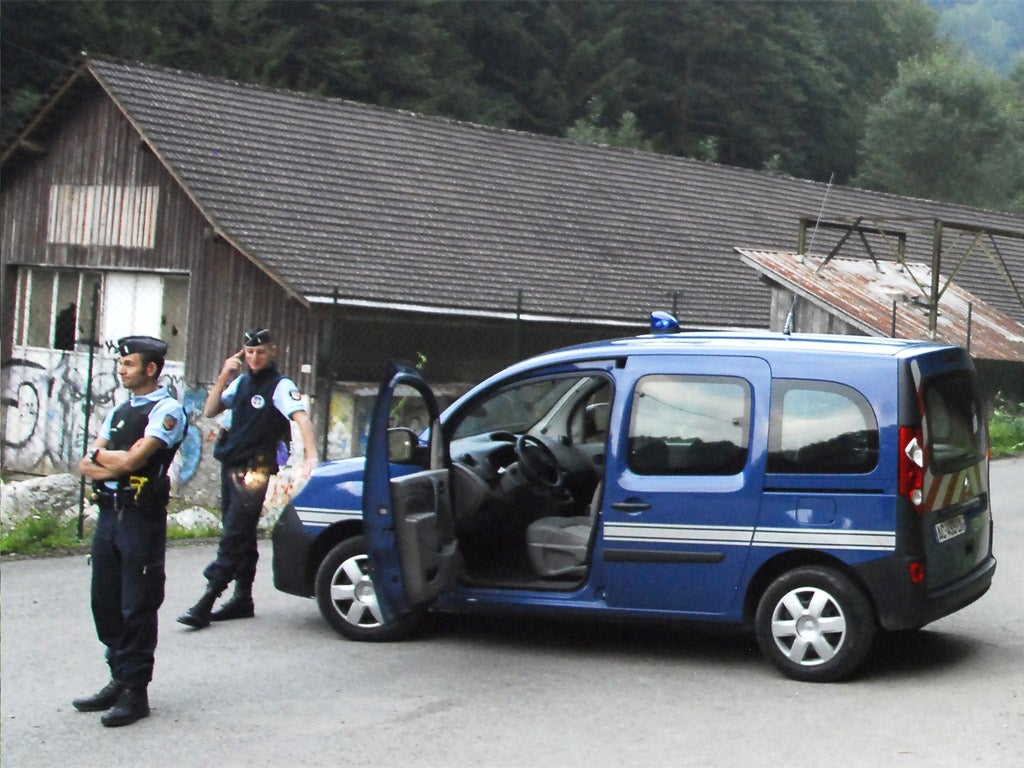French Alps murders: Seven-year-old Zainab al-Hilli tells police and relatives of her 'terror' at the shootings
The schoolgirl has been brought out of her medically-induced coma and although still sedated was able to talk to officers.

Zainab al-Hilli, the seven-year-old girl who saw her parents murdered in the French Alps massacre, has spoken to police for the first time and does appear to remember the details of the killings, it emerged today.
The schoolgirl, who remains under armed guard in hospital in the city of Grenoble, has been brought out of her medically-induced coma and although still sedated was able to talk to officers. She has also told family members at her bedside of her “terror” at what took place.
Sources close to the investigation told the French media that Zainab, who was shot in the shoulder and suffered a fractured skull in the attack, seemed to recall elements of what happened during the horrific moments last Wednesday when her parents and maternal grandmother were executed on a twisting mountain track.
A source said: “They have been able to speak to her but this was just an initial meeting. They could not go into any detail and the child was very tired. It was not permitted for the discussion to go any further.”
Specialist officers are now preparing for the vital but delicate task of interviewing the young girl, who may be able to identify those responsible for the killings. But Zainab’s condition means it is likely to be several days before doctors decide whether she is ready to be asked further questions.
The youngster’s progress came as it was revealed that a single weapon using an outmoded calibre of ammunition was used to kill the al-Hilli family and Sylvain Mollier, a French cyclist who happened on the scene.
Ballistic experts believe that a 7.65mm calibre automatic pistol – a small and old-fashioned gun – was used to fire all 25 shots during the slaughter on a track above Lake Annecy in south eastern France.
Sources in the French investigation said that the pistol – once used for personal protection but now rare – was not the type of fire-arm carried by professional assassins or government hit-men. British experts said that although unusual, ammunition for 7.65mm weapons remained widely available in Europe and such pistols had the advantage of making less noise than more powerful 9mm guns.
French investigators added that the use of a single gun did not necessarily mean that the killer acted alone. Other evidence pointed to the presence of two assailants at the scene.
Examination of bullets found in the bodies, including two in the head of each victim and five in the cyclist’s back, has allowed ballistic experts to establish a tentative order of events. They believe that Saad al-Hilli, 50, a British-Iraqi aeronautical engineer, was the first to be shot behind the wheel of his wine-coloured BMW estate car.
The gunman then shot the two women on the back-seat of the car, Mr al-Hilli’s wife, Iqbal, 47, and her 77-year-old Swedish-Iraqi mother. The last person to die was Mr Mollier, reinforcing the view that he was murdered because he stumbled on the scene of the massacre. The gun would have to be re-loaded at least once.
Mr Al-Hilli had been seen "acting strangely" before his death, leaving his family alone several times each day and switching campsites at short notice, it was reported last night.
In Britain, the search of the al-Hilli’s mock Tudor family home was halted today and neighbours evacuated after officers found “items of concern” in an outhouse at the bottom of the garden of the house in the affluent village of Claygate in Surrey.
An Army bomb disposal squad was called to scene but the search later resumed after police said the unidentified items were not hazardous.
Subscribe to Independent Premium to bookmark this article
Want to bookmark your favourite articles and stories to read or reference later? Start your Independent Premium subscription today.
